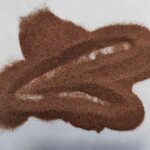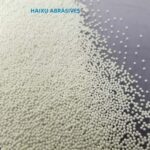What is the specific gravity of zirconia balls?
Zirconia balls have higher density and hardness than other abrasives. Zirconia balls have different compositions, so the density and hardness are different.
In the grinding industry, the higher the density and hardness of zirconia balls, the better the grinding effect. High density means greater weight of the same volume, so the kinetic energy is greater. High hardness can grind materials with relatively lower hardness, and the higher the hardness, the smaller the wear.
The density of 95 zirconia balls is 6.0g/cm3. If the gaps between zirconium balls are taken into account, it is the bulk density, which is smaller than the density, at 3.6g/cm3.
The density of zirconia beads is related to the composition. The more zirconium content, the greater the density and the higher the bulk density.
The zirconium content of pure zirconia beads is 94.8, the density is 6.0g/cm3, and the bulk density is 3.6.
Cerium stabilized zirconia beads, the main components are cerium oxide (9-13%) and zirconium oxide (83%-87%), the colors are brown, black and yellow, the density is 6.1g/cm3, and the bulk density is 3.66.
80 zirconia beads, the main components are zirconium oxide (80%) and aluminum oxide (20%), the density is 5.2g/cm3, and the bulk density is 3.12.
65 zirconium silicate beads, the main components are silicon dioxide and zirconium oxide (65%), the density is 4.0g/cm3, and the bulk density is 2.4.
If the zirconia ball is heated by adding a stabilizer (such as yttrium oxide, cerium oxide), it can avoid cracking when cooling after heating.
Therefore, we often add 5% yttrium oxide as a stabilizer and then add 95% zirconium oxide.
The hardness and density of the zirconia ball made in this way are relatively high, which is applicable to many industries, even for high-viscosity materials.








